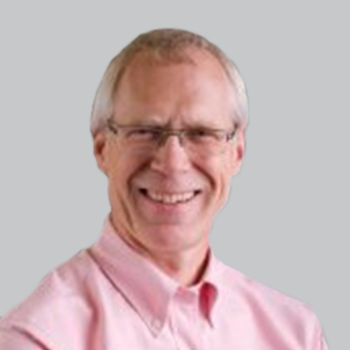
By comparing results with pooled placebo groups from the PRO-ACT database, the data showed a 67% slower ALSFRS-R progression with IPL344.

Marco Meglio, Assistant Managing Editor for NeurologyLive, has been with the team since October 2019. Follow him on Twitter @marcomeglio1 or email him at [email protected]

By comparing results with pooled placebo groups from the PRO-ACT database, the data showed a 67% slower ALSFRS-R progression with IPL344.

On King’s staging systems, ALSAQ-5 scores increased from 24.6 at stage 1 to 62.1 at stage 4, whereas for Milano-Torino Staging systems, patients’ ALSAQ-5 scores increased from 43.2 at stage 0 to 80.7 at stage 3.

Nearly one-fourth of the observed treatment-emergent adverse events were related to edaravone. Additionally, there were no serious TEAEs found, and TEAEs were mostly representative of ALS progression.

Treatment with RNS60 resulted in significantly slower rate of decline in FVC and eating and drinking domains of the ALSAQ-40 scale over a 24-week period.

Treatment with tegoprubart resulted in significant reductions of CD40L and CXCL13 levels that occurred after first infusion and sustained throughout the treatment period.

Once thought nearly impossible to treat, ALS has seen another step of progress with the approval of AMX0035 and a future of potential therapeutics on the way.

SBT-272, an investigational small molecule in development for ALS and other neurological disease of mitochondrial dysfunction, resulted in improved membrane potential and axonal outgrowth of TDP-43 in vitro.

The adult neurologist at Allegheny Health Network provided perspective on why there’s never been a better time to treat patients with myasthenia gravis.

Laurits Taul Madsen, a PhD candidate at Aarhus University, discussed the use of lower extremity function assessments to characterize patients with MS at risk for future falls.

In the meta-analysis, the Paleolithic and Mediterranean diets continued to outperform other dietary interventions such as ketogenic, anti-inflammatory, fasting, and calorie restriction on fatigue and quality-of-life outcomes.

Patients treated with PC-rTMS showed almost no decline in the CDR-SB score, and presented a clear advantage in terms of cognitive functions in contrast to the worsening of the score observed in the sham group.

Among those on early highly-effective treatments, shorter disease duration and shorter time between first treatment and current treatment led to more patients achieving no evidence of disease activity.

Two weeks after natalizumab infusion, patients demonstrated significantly less central fatigue, with a trend for a reduction in supraspinal fatigue, among other notable findings.

Neurology News Network for the week ending October 28, 2022. [WATCH TIME: 4 minutes]

Using a prespecified noninferiority margin of 0.2 rate ratio, rituximab failed to distinguish itself from ocrelizumab on the primary end point of annualized relapse rate.

In the first of its kind ARISE study, treatment with dimethyl fumarate resulted in more than 80% reduction in risk of first demyelinating event relative to placebo.

Dose-dependent reductions in neurofilament light were observed at week 144 in both those who continued treatment from the double-blind period and those who switched from placebo.

Using a cohort of more than 2000 pregnancies, the data showed an extremely rare number of major congenital anomalies while on ocrelizumab, as most patients underwent live birth with no issue.

Using phenotypically “extreme” MS groups, annualized brain volume loss was higher in progressors vs non-progressors and was predicted by baseline GFAP and NfL levels.

The favorable annualized relapse rates for fingolimod over interferon beta-1a observed in the 2-year core phase continued in a 5-year open-label extension.

Over a median of 73.5 weeks of follow-up time, zero adjudicated relapses were observed for those with AQP4+ NMOSD on ravulizumab.

Among 43 cycles that achieved pregnancy, investigators observed decreases of annualized relapse rates from 0.26 to 0.09.

The neurologist at Allegheny Health Network’s Neuroscience Institute provided perspective on a new phase 3 trial assessing fenebrutinib, an investigational BTK inhibitor for relapsing multiple sclerosis.

The primary outcome of the study, 50% reduction in corticosteroid dosing, was achieved by 60% of patients on IGIV-C and 63.3% of those randomly assigned to placebo.

Over a 24-month treatment period, apitegromab-treated patients showed improvements on PEDI-CAT and PROMIS, measures of activities of daily living, and ESBBT, a muscle endurance measurement tool.

Foralumab, an anti-CD3 monoclonal antibody, has been previously assessed in diseases such as progressive multiple sclerosis and Crohn disease, as well as in patients with mild to moderate COVID-19.

Within 5 years after the index date, the lowest proportion of epilepsy diagnoses were among those treated with angiotensin receptor blockers and highest in those on ß-blockers and calcium channel blockers.

Changes in plasma pTau217 and GFAP levels from donanemab significantly correlated with percent change in amyloid plaque level as measured by amyloid PET imaging.

The composite score, which consisted of 6 linguistic features and 3 acoustic features, was shown to be sensitive to measures of disease progression, with a potential to help understand treatment response.

In a traditional placebo-controlled trial, Nerivio outperformed placebo in the reduction monthly migraine days and monthly headache days, regardless of chronic or episodic migraine status.